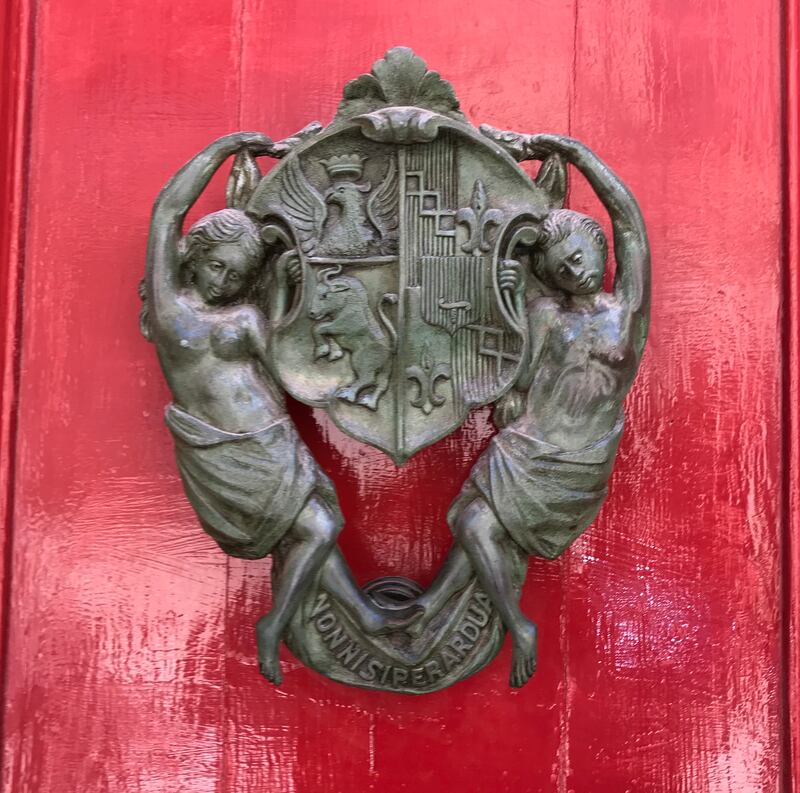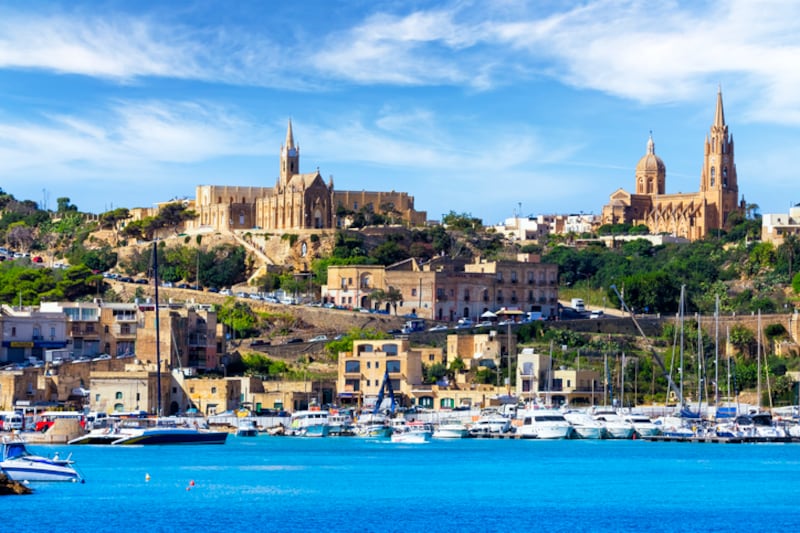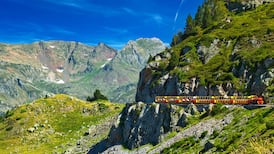For most, the draw of Malta is the more-or-less guaranteed sunshine and clear blue water of the Mediterranean – Valletta was recently rated Europe’s sunniest capital. Swimming and diving are big attractions, but there is plenty here too for the culturally curious, independent traveller. Malta is a palimpsest of European history, seven thousand years in the making, from marvellously intact megalithic temples to the Baroque splendour of Valletta and Mdina, from the buzzing nightlife of the capital’s atmospheric Strait Street to the rural tranquillity of Gozo.
Travellers have been visiting this friendly, affordable, English-speaking island since the Stone Age, but it’s the history of the Knights of Malta, the aristocratic Catholic order that ruled the island during the Renaissance, that feels most present, and their legacy – in art, in architecture, and the languorous pace of Maltese life – is everywhere to be seen.
As this tiny archipelago, just 80km south of Sicily, launches its inaugural biennale this month, featuring exhibitions and installations from more than 70 contemporary artists from 30 countries around the world, Malta is beginning to flex its cultural muscles, and now is a perfect time to leave the beach resorts behind and turn your gaze inland.
If you’re looking for culture and history, good local food and wine, and atmospheric lodgings that won’t break the bank, here are 10 things to do in Malta without getting your feet wet.
READ MORE
1. Explore renaissance Valletta on foot
Malta’s capital Valletta, a Unesco World Heritage Site, is compact to say the least — just 1km by 600m — but that makes it the perfect place to go pedestrian and get to know this Renaissance city of honeyed stone. Take a day and see most of it. Better yet, check into one of the city’s luxurious converted townhouses, like the St John on Merchants Street and feel like you’re part of it. There are more baroque churches and grand palazzos than you could brandish a sword at, but you really shouldn’t miss the Co-Cathedral of St John, the Grandmaster’s Palace and Muza, the National Museum of Fine Arts. Along the way, keep an eye out for the typically Maltese-carved niches on every street corner.
2. Discover Renzo Piano’s City Gate
In a city barely changed since the 17th century, Renzo Piano’s audacious design for the city’s main entrance has divided local opinion. Unveiled in 2014, the new precinct reprises the Maltese limestone of the rest of the city, but its angular masonry, its environmental innovations, and the way Piano’s plan forces a breach in the city’s ramparts, marks a daring break with tradition.
3. Walk the ramparts

Built in the late 16th century, Valetta’s massive stone bastions were meant to repel invaders but today they offer stunning views across the various harbours that surround the city. Bring your water bottle, wear a sun hat and take your time. Pause in the shade of the Upper Barraka Gardens, laid out as pleasure gardens for the Knights in the 1560s, and if you time it right, you’ll see (and hear) the Saluting Battery firing its antique guns at noon.
4. Take a ‘Dghajsa’ across the Grand Harbour
Near the Barrakka Gardens, take the public elevator – it’s free to descend, but costs €1 to ascend again — and drop down to the quayside. Dghajsas are the gondolas of Malta, water taxis of antique design that still ply their trade back and forth across the Grand Harbour. Skim across to Birgu, climb up through the narrow, stone-flagged streets and find the Norman House, a restored 13th century townhouse with free entry, and get to see what lies behind the closed, forbidding doors of Valetta’s pretty but less touristy neighbour.
5. See the Caravaggio at the Co-Cathedral of St John

The Co-Cathedral’s austere Renaissance facade conceals one of Malta’s big cultural attractions, St John’s improbably ornate Baroque interior. The Maltese are rightly proud that Caravaggio spent a year on the island — the Knights even inducted him briefly into their order — and the great Italian painter’s masterpiece, the Beheading of St John, still hangs in an atmospheric side oratory. But make sure you also find the narrow stairway that leads up to the gallery for a closer look at Mattia Preti’s magnificent tromp l’oeil frescoes.
6. Go knocker-spotting in Mdina

Game of Thrones fans will find Mdina familiar viewing, but this aristocratic, impossibly picturesque city has been drawing visitors to its cloistered streets since the Phonecians. Malta’s original capital, Mdina’s grand baroque palaces still belong to the Maltese nobility and a stroll through the Silent City (cars are not allowed in), checking out the ornate knockers which adorn the palazzo doors, is one of the island’s must-dos.
7. Time travel in Neolithic Malta
The jewel in Malta’s archaeological crown is the Hypogeum, a mysterious Unesco World Heritage Site, hollowed out of solid bedrock and dating back to 3,600BC but to be one of the few to get inside, you need to book weeks, if not months, in advance. If that’s too organised by half, get away from the crowds on the less populated south coast and check out the Hagar Qim and Mnajdra Temples, windswept megalithic ruins clinging to a rocky hillside overlooking the tumbledown Isle of Filfla, which the Royal Navy used for target practise during the second World War.
8. Visit at festival time or find a local ‘festa’ and go native
Valetta’s famous Baroque Festival takes place in January in the on-period splendour of the Teatru Manoel and various churches around the city. In high summer, the city reverberates to the sound of jazz at the Malta International Jazz Festival (July 8th–13th) and this year the island hosts its inaugural biennale exhibition. But for a native experience at any time of the year, why not find your own festa? Malta is 98 per cent Catholic and every parish celebrates its own patron saint’s day in extravagant style. Hardly a week goes by without a festa happening somewhere — just follow the sound of the fireworks.
9. Get Your camera out at Marsaxlokk fishing village

Most places on the main island are a short bus ride away, and Marsaxlokk, a few miles south of Valletta, is well worth the trip. Amateur photographers will fill their boots, and a couple of memory cards, at this picture-perfect fishing village where traditional Luzzu boats, with their painted eyes to ward off evil, jostle at their moorings in the glassy harbour. The nets drying on the quayside are still used for catching fish, but they also make a pretty backdrop, and laid-back cafes and market stalls sell local arts and crafts to while away a few hours.
10. Take the ferry to Gozo

Though just 6km from the main island, rural Gozo is a world away from the bustle of Malta and its quiet roads are a haven for walkers. Proud Gozitans will tell you that the temples at Ġgantija in the centre of the island may well be the oldest free-standing structures in the world, but take a morning too to wander through the narrow streets of Victoria or Rabat, as the locals know it. Find St George’s Square, and join the locals queuing up for the local delicacy of pastizzi (puff pastry parcels with savoury fillings) and coffee by the glass.
The Malta International Jazz Festival, July 8th-13th
High summer in Valletta means the Malta International Jazz Festival, credibly programmed by Maltese guitarist Sandro Zerafa. Headline concerts happen on an outdoor stage overlooking Marsamxett Harbour, with food and drink stalls and a party atmosphere, but there’s music throughout the city, on open-air stages and in the tiny, music-friendly Offbeat music bar on Merchants Street. This year’s festival features US saxophonist Walter Smith III’s powerful quartet and guitarist Gilad Hekselman’s excellent Trio Grande, with more acts to be announced in the coming weeks. More at maltajazzfestival.org
Malta Biennale 2024
Move over Venice. Malta opened its inaugural biennale earlier this month, welcoming a roster of artists from around the world with exhibitions and installations set to take place in 12 historical sites across the archipelago. The event’s Italian curator, Sofia Baldi Pigh, chose insulaphilia as the theme of this year’s biennale, examining the island’s position at the crossroads of the Mediterranean. There will be national pavilions hosted by Austria, China, Franco-Germany, Italy, Malta, Palestine, Poland, Serbia, Spain, Turkey, and Ukraine, with artists including Cuban artist-activist Tania Bruguera and Italian performance collective Post Disaster. Malta Biennale runs from now until May 31st. More at maltabiennale.art
Food and drink
Maltese cuisine is a mouthwatering blend of the many cultures that have held sway here over the centuries. For typically Maltese food in Valletta, try the historic Kings Own Band Club restaurant on Republic Street, with one of the island’s top chefs in the kitchen and, if you’re lucky, the band practising upstairs. Aaron’s Kitchen on Archbishop Street serves the finest ravioli known to man — well, this man anyway. Bread is big here, and for a taste of an authentic Maltese ftira, Nenu’s in Valletta and L-Imġarr is a must. In Mdina, try the upmarket Trattoria AD tucked away in a quiet square, with excellent food and a fascinating display of antique woodworking tools on the walls.
Accommodation
The resort hotels that line the coast still offer affordable package deals to sun worshippers, but in recent years, enterprising Maltese have begun restoring some of the island’s fine palazzos and townhouses, offering a more authentic Maltese experience. Prices go up in the summer months, so it’s worth thinking about visiting offpeak. The Saint John in the heart of Valletta is a tasteful townhouse conversion with typical bay windows overlooking the street, a perfect base for exploring the city (doubles from about €200 off-season; thesaintjohnmalta.com). The Pallazzo Prince d’Orange on Paul’s Street is a lavishly decorated baroque mansion divided into self-catering apartments of varying dimensions (doubles from about €150, penthouse from €300; palazzo-prince-dorange.valletta.hotels-mt.com). In Mdina, options are limited but the five-star Xara Palace offers a taste of aristocratic luxury for a one-night splurge (doubles from €240; xarapalace.com.mt). On Gozo, Thirty Seven, a stylishly converted 400-year-old farmhouse, has doubles from about €150 (thirtysevengozo.com).
Cormac Larkin travelled as a guest of the Malta Tourism Authority. For more information on the archipelago, see visitmalta.com.





















